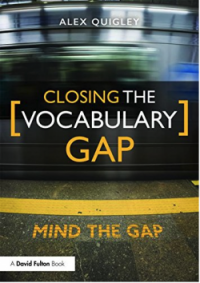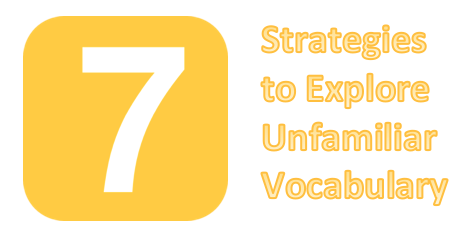A 10-year-old child who is a good reader will encounter something like 1 million words a year (around 12 novels), but crucially, approximately 20,000 of those words will prove unfamiliar (Oakhill et al. 2015). It is important then to support our pupils to develop an array of independent word learning strategies to explore and to better understand an unfamiliar word they encounter.
The most common strategies for comprehending a new or unfamiliar word include using a dictionary or guessing word meaning from the context of the sentence. Unfortunately, pupils often have limited word knowledge so that a dictionary proves a blunt tool (from knowing the spelling of an unfamiliar word, to selecting the correct meaning of a word from the selection available). Also, the context of a sentence can often prove unhelpful and sometimes even misdirective.
We can support pupils by deliberately practising an array of strategies for exploring an unfamiliar word. Over time these strategies can be internalised as independent word learning skills that pupils use automatically.
- Word parts (morphology). Though a word may prove unfamiliar, pupils can often recognise parts of a word. Common prefixes and suffixes offer strategies for pupils to recognise words and connect them to their prior knowledge. Faced with a word like ‘depression’ and ‘devolve’, pupils can connect the ‘de’ prefix, meaning ‘down’.
- Word families. The common patterns and features offered by word families are helpful to recognise tricky new words. Faced with a complex word like ‘oligarchy’, pupils recognise the familiar root ‘archy’, meaning ‘rulership’. It offers an essential hook to understand the word, offering more familiar related words like ‘monarchy’.
- Word histories (etymology). The majority of the complex vocabulary of school has Latin & Greek origins. These word stories can offer vital hooks to better understanding the meaning of an unfamiliar word. For example, the word hydrogen derives from the Greek – ‘hydro’ meaning ‘water’; ‘gen’ meaning ‘to bring forth’.
- Spelling (orthography). The spelling of a word can sometimes give a useful clue as to the meaning of a word. Pupils can identify common word families and part when exploring the spelling of a word. In words like ‘subtle’ and ‘debt’, pupils recognise the unfamiliar ‘b’. The roots of the spelling are in Latin, connecting to word histories and word families.
- Multiple meanings. Deep word knowledge needs pupils to actively connect words and to explore layers of meaning. Many of the complex words of school are polysemous – they have multiple meanings – and so pupils need to explore the appropriate meaning of the word. A word like ‘cracking’ has a popular meaning, but in Science it is a very specific chemical reaction.
- Synonyms and antonyms. Sometimes unfamiliar words are simply the more sophisticated labels for familiar words e.g. ‘avarice’ simply means excessive greed.
- Connecting to context. Rather than just relying on the contextual clues just from a sentence (which can be helpful, or not), pupils can be more aware than certain words are more prevalent in different subject domains or text types. By connecting up words, their families, into different subject domains and text types build a deep schema of knowledge that increases understanding of word meanings and their uses.
Crucially, the best strategy to learn new words is to already possess a wealth of words. Like mental velcro, having a broad and deep vocabulary offers the necessary ‘hooks’ to better understand new or unfamiliar words. For this reason, explicitly teaching vocabulary, drawing upon these seven strategies, is a great tool for teachers in the classroom.
You can find a PDF version of these 7 strategies in my ‘Closing the Vocabulary Gap Resources‘ on the RESOURCE page of my blog.
If you are interested in learning more about vocabulary instruction and ‘closing the vocabulary gap’ in the classroom, my book ‘Closing the Vocabulary Gap‘ is now available here:
Amazon – http://amzn.to/2FiwDFX Routledge – http://bit.ly/2C0vxgI







Comments